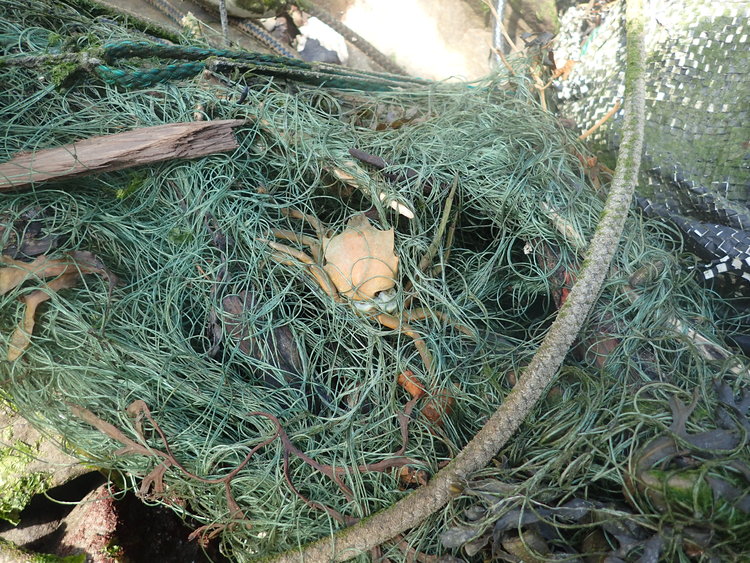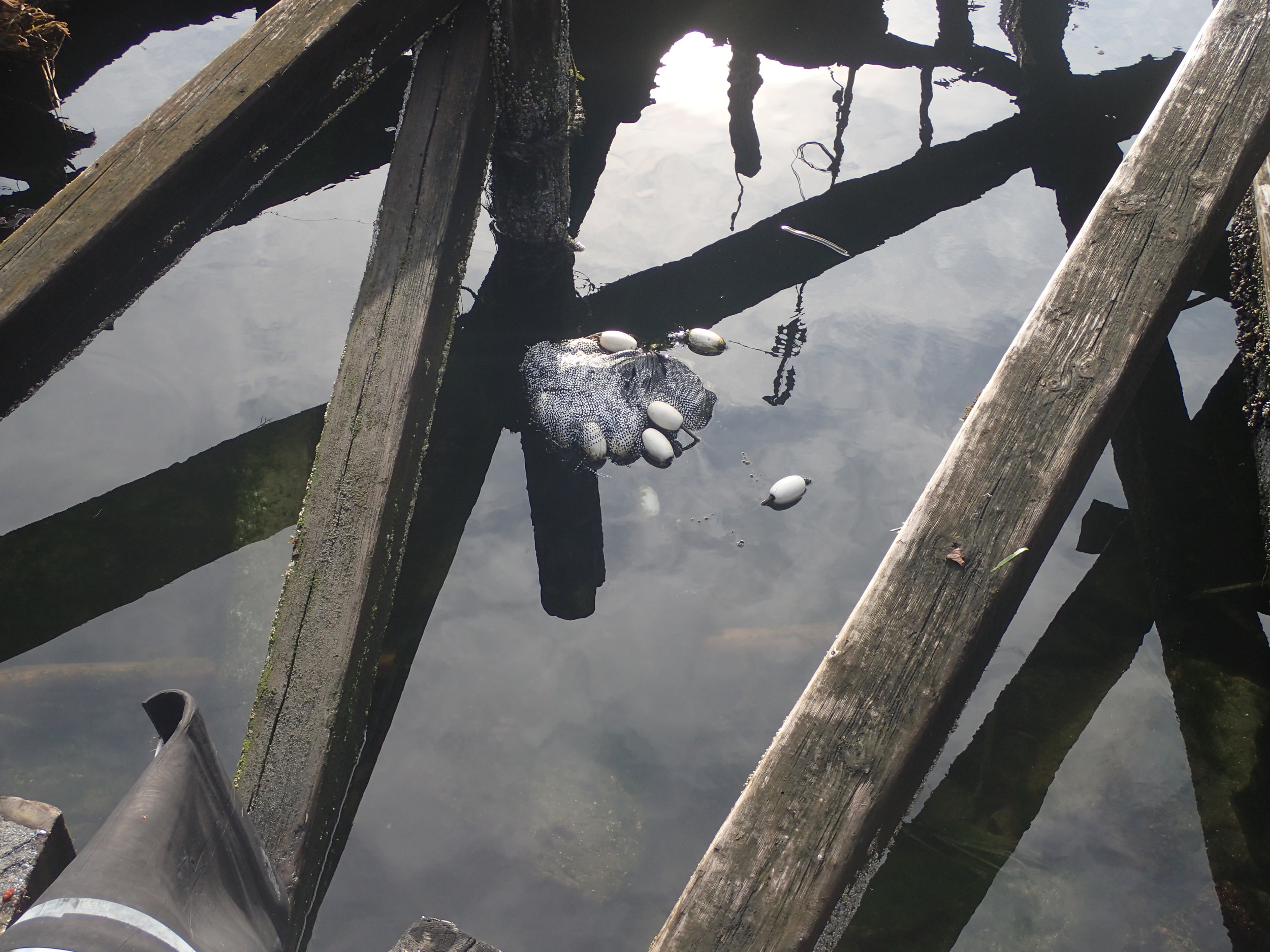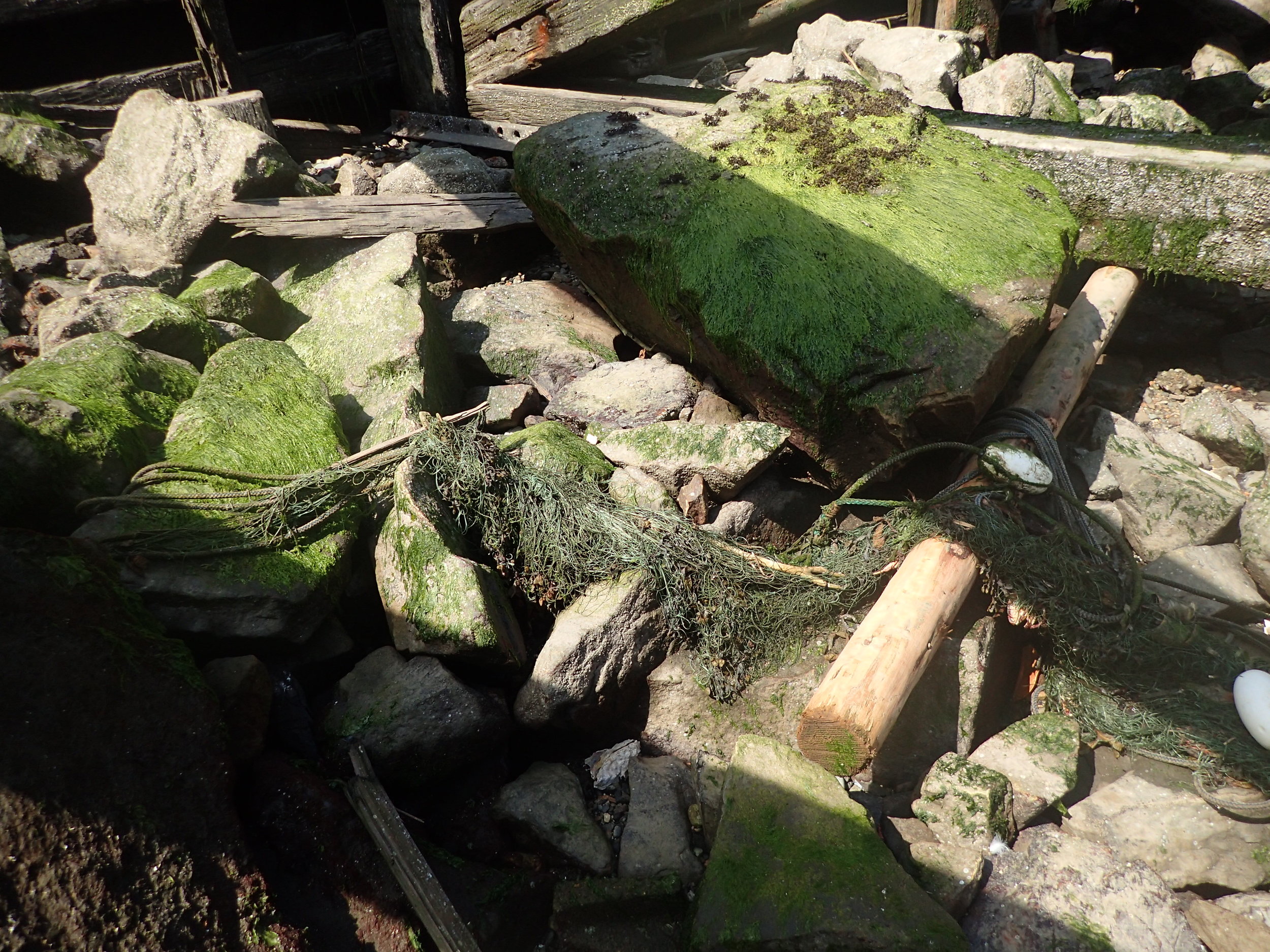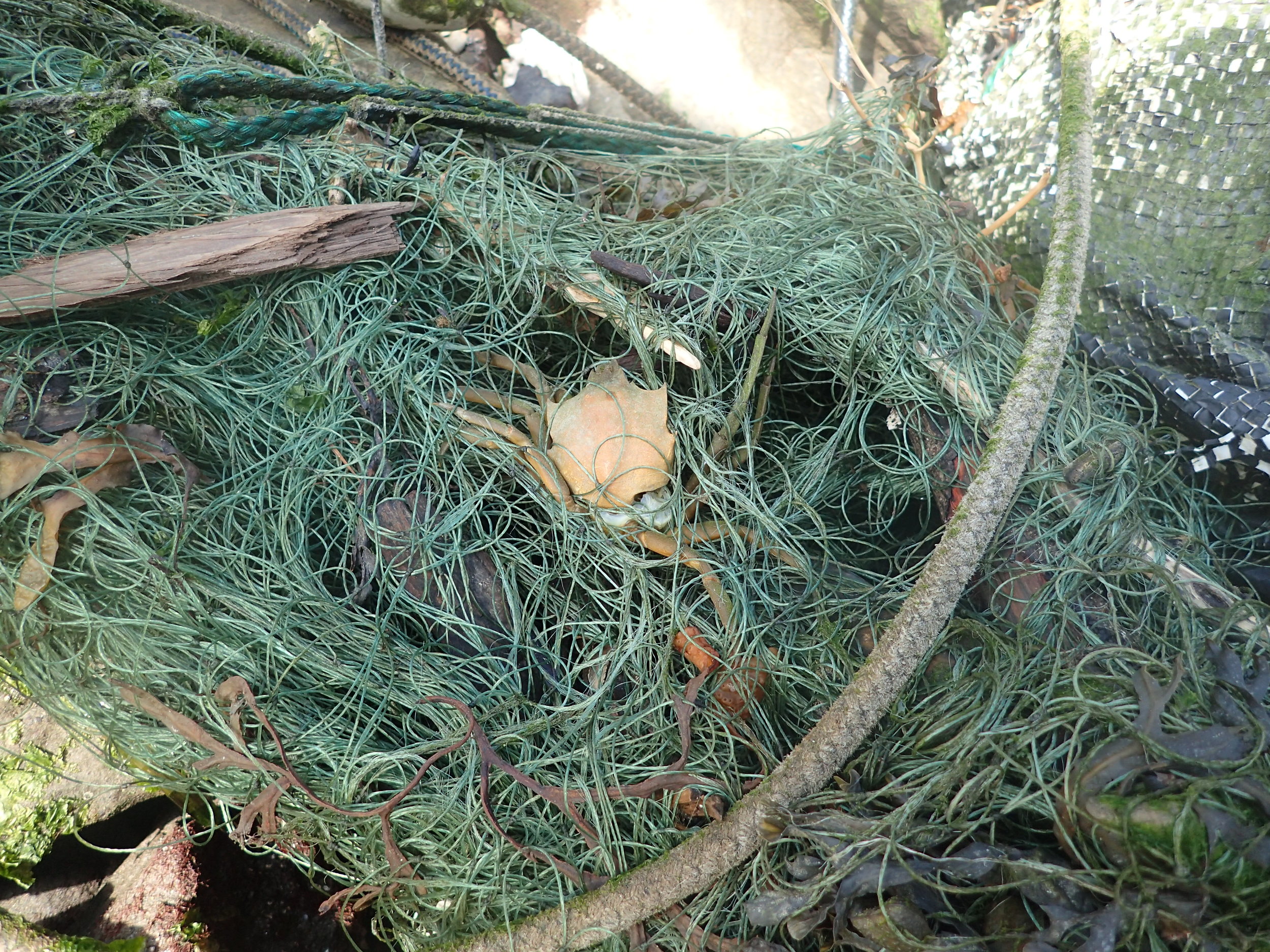By its nature - lost fishing gear is almost always hidden from view under the waves. Identifying the magnitude and location of the problem is one of our greatest challenges. One of the easy methods we have for tracking this problem however is the frequency with which lost nets and materials are washed up on the shore line, though this is inevitably a tiny minority of the overall problem we can at least be sure that where nets are more commonly found on the shoreline, there will be a larger problem nearby.
Below is an example of a lost gill net that found its way onto the shore in Nanaimo BC. The facility where the net was found does not deal with fishing vessels or fishing activities, meaning that the travel for this net between loss and washing ashore is reasonable. Lost fishing gear can be continuously mobile via ocean currents or other means such as vessel entanglement.
Lost gill net among timber piles and rip rap.
This net also appears to have been packaged in a refuse bag, leading us to believe that it had reached the end of its service life and was being prepped for transport to a landfill. Unfortunately the net ended up in the ocean and has been passively fishing ever since. With some closer inspection we identified several marine animals that had been entangled and were killed as a result.
Being in the inter-tidal zone it also has the potential to continue impacting aquatic life as it spends half of the day underwater as seen in the photos below - and even when above water the potential for impacting wildlife that relies on temporary exposure of mudflats continues.
ESPS is currently waiting for permission to access this site to remove and properly dispose of this net.






